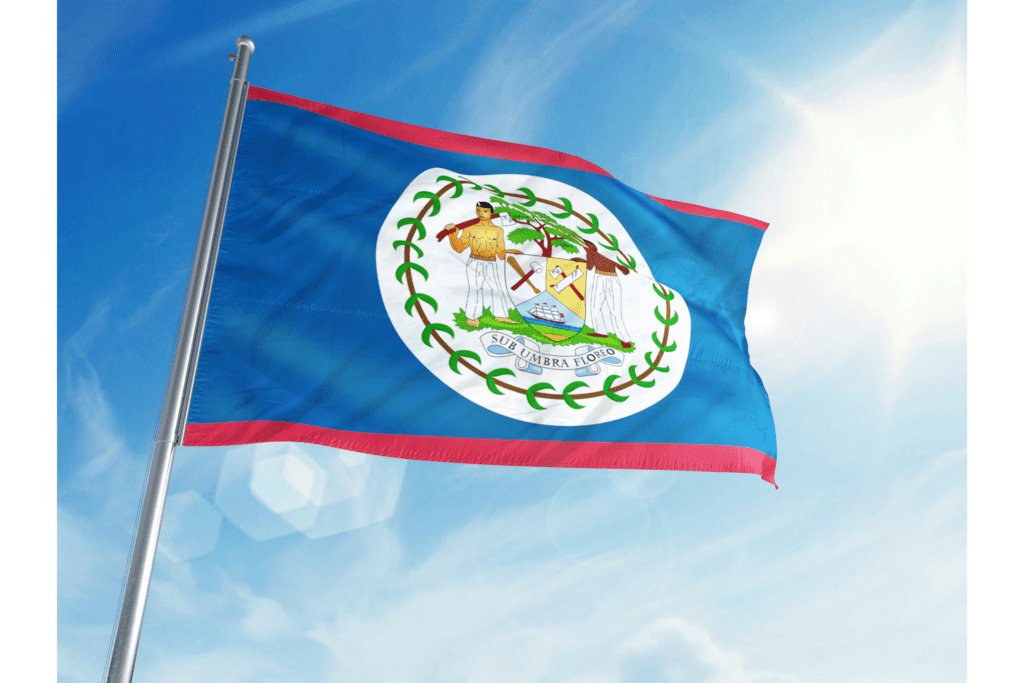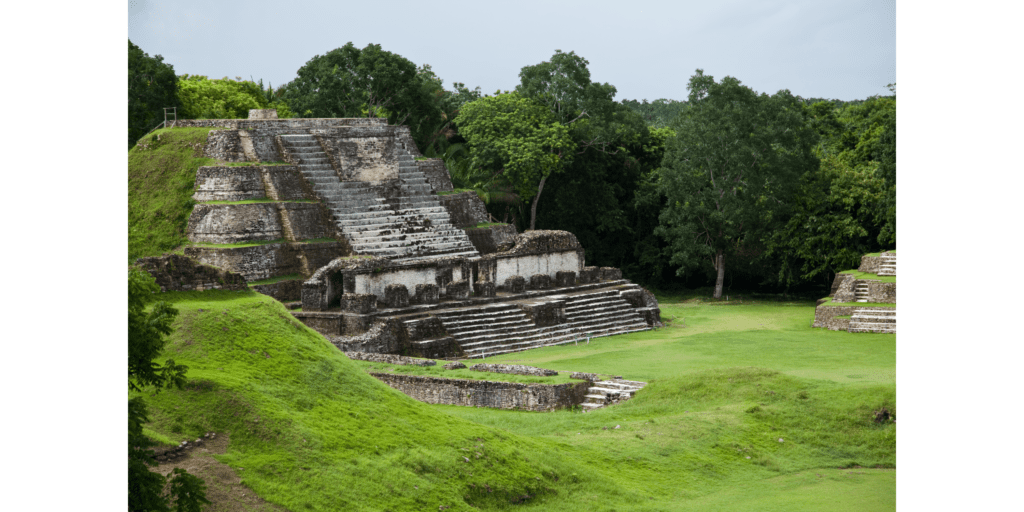Recently we discovered an article by the vacation management company Vacasa, which just so happens to offer short-term rental management services in Belize. The article was a comparison asking the question Which is better, Belize or Costa Rica? So we thought we would add our own thoughts on this topic and outline them in the article below.
To read the article that inspired us you can check it out here on the Vacasa blog.
Obviously, there is no definite answer to this question. It comes down to preference and personal desire. But if you’re trying to decide which might be better for you personally, Belize or Costa Rica; Let’s compare seven different metrics and help you figure out which country might be the better one for you.


Introduction – Comparing Metrics
Belize and Costa Rica are two of Central America’s most attractive destinations for travelers, boasting rich cultural experiences, stunning natural beauty, and a plethora of outdoor activities. This article aims to draw a comparison between these two countries based on seven key metrics: transportation, beaches, outdoor attractions, kid-friendly activities, lifestyle and culture, affordability, and accommodation options.
Metric 1: Transportation

Belize, smaller in size compared to Costa Rica, has an edge when it comes to transportation. A well-connected network of highways, water taxis, and domestic flights links its major cities and tourist hotspots. Belize City, the country’s largest urban area, serves as a central hub from which travelers can easily reach various parts of the country. The Belize City Municipal Airport offers regular flights to key destinations like Ambergris Caye, Caye Caulker, and Placencia. For those who enjoy a more leisurely pace, water taxis offer a scenic mode of transport, connecting Belize City with offshore cayes.
The country’s highway system, although not as extensive as that of larger countries, is well-maintained and easy to navigate. The George Price Highway, for instance, connects Belize City with the capital, Belmopan, and extends westward to the Guatemalan border. The Philip S.W. Goldson Highway connects Belize City with the northern districts and Mexico.
Belize’s public transportation primarily comprises buses and shared taxis. Former US school buses, colorfully painted and often filled to the brim, ply the main highways and are a common and affordable means of travel. These buses, colloquially known as “chicken buses,” offer a unique and authentic Belizean experience.
Meanwhile, Costa Rica, with its rugged terrain and less developed infrastructure, presents a more challenging travel scenario. While Costa Rica’s public transportation system is comprehensive, its mountainous topography can make journeys longer and more complex. Buses, though frequent and relatively inexpensive, often require transfers to reach certain destinations, and timetables can be confusing for first-time visitors.
The country’s two international airports, Juan Santamaría near San José and Daniel Oduber in Liberia, provide good access to the country’s coasts and national parks. However, remote areas may require a combination of bus, taxi, or even boat to reach. Travelers who do not speak Spanish might find navigating Costa Rica’s public transportation system a bit challenging, although locals are often helpful.
Despite these challenges, the adventure of traversing Costa Rica’s diverse landscapes can be part of the country’s appeal. From cloud-enshrouded mountain passes to lush coastal plains, the journey can be as memorable as the destination.
In conclusion, Belize’s transportation system offers a more straightforward, user-friendly experience, making it a more comfortable choice for those who prioritize easy transportation. Costa Rica, while offering a wealth of stunning destinations, may require more planning and patience to navigate.
Metric 2: Beaches

When it comes to beaches, both Belize and Costa Rica offer unparalleled beauty and diverse coastal experiences. Belize’s coastline stretches approximately 386 km, graced by the Mesoamerican Barrier Reef System, the second-largest reef in the world. The reef not only acts as a protective barrier for the beaches but also provides excellent opportunities for snorkeling and diving. Ambergris Caye, the largest island in Belize, is renowned for its white sandy beaches and crystal-clear waters. The laid-back town of San Pedro offers a variety of waterfront accommodations, restaurants, and beach bars, while the Hol Chan Marine Reserve offers world-class snorkeling and diving opportunities.
On the west side of Ambergris Caye is the amazing Secret Beach. Obviously a personal favorite of ours, Secret Beach not only has some of the best beaches on the island it’s also one of the fastest growing areas in all of Belize with new homes and businesses being built every day, with no signs of slowing down.
Placencia, located in the south, offers 16 miles of golden sand beaches and is a gateway to the Gladden Spit and Silk Cayes Marine Reserve, a popular spot for whale shark encounters. Beyond diving and snorkeling, the beaches of Belize offer fishing, sailing, kayaking, and simply lounging in the sun.
Costa Rica, on the other hand, boasts two distinct coastlines with the Pacific Ocean to the west and the Caribbean Sea to the east. This dual-coast setup offers an array of beach experiences to suit every traveler’s preference. The Pacific coast is known for its darker, volcanic sand beaches, dramatic cliff formations, and excellent surf conditions. Towns like Tamarindo and Jacó are popular surf spots and offer a variety of beachfront accommodations, restaurants, and nightlife.
The Caribbean coast offers a stark contrast with its white and golden sand beaches, clear turquoise waters, and lush, verdant landscapes. Puerto Viejo de Talamanca, a lively beach town, offers a unique blend of Tico, Afro-Caribbean, and Bribri indigenous cultures, giving it a distinct vibe. The nearby Cahuita National Park and Gandoca-Manzanillo Wildlife Refuge offer fantastic opportunities to explore Costa Rica’s rich biodiversity.
Costa Rica’s beach diversity, coupled with its developed tourist infrastructure, might give it an edge over Belize for beach lovers, but Belize’s unique offerings like Secret Beach, and the barrier reef, particularly for underwater enthusiasts, should not be underestimated.
Metric 3: Outdoor Attractions

Outdoor attractions are abundant in both Belize and Costa Rica, each offering a distinct set of experiences. Belize’s dense jungles and pristine rivers are home to a vast array of wildlife, including jaguars, tapirs, and numerous bird species. The country’s protected areas, including the Cockscomb Basin Wildlife Sanctuary and the Blue Hole National Park, offer excellent opportunities for hiking, wildlife viewing, and birding.
Moreover, Belize is renowned for its impressive Mayan ruins. Sites such as Caracol, Lamanai, and Xunantunich provide unique opportunities for exploration and offer a glimpse into the ancient Mayan civilization. Coupled with Belize’s cave systems, including the Actun Tunichil Muknal (ATM) Cave, which is considered one of the top sacred caves in the world, the country provides a rich set of outdoor adventures that blend nature and history.
Costa Rica, known for its extraordinary biodiversity, offers an extensive array of outdoor attractions. The country is home to a network of national parks and reserves, each offering unique ecosystems and wildlife. The Monteverde Cloud Forest Reserve, with its suspension bridges and zip-lining opportunities, offers visitors a chance to explore the rich cloud forest biodiversity.
The Tortuguero National Park, accessible only by boat or small aircraft, is one of the most important nesting sites for green sea turtles in the western hemisphere. Other highlights include the active Arenal Volcano, providing a dramatic backdrop for hiking and hot springs, and the Manuel Antonio National Park, where the rainforest meets the sea.
Whether you’re an avid bird watcher, a history buff, an adrenaline junkie, or simply a nature lover, both countries offer a wealth of outdoor attractions that cater to a wide range of interests and adventure levels.
Metric 4: Kid-Friendly Activities

For families traveling with children, both Belize and Costa Rica offer a myriad of kid-friendly activities. In Belize, children can enjoy a unique cave tubing experience along the Caves Branch River, an adventure that combines natural history, geology, and a bit of thrilling fun. Snorkeling in the Hol Chan Marine Reserve offers an opportunity for kids to explore the underwater world and encounter marine life like nurse sharks and stingrays. Belize Zoo, home to more than 170 animals of about 50 species, all native to Belize, provides a fun and educational experience for children. Interactive wildlife programs make it a must-visit for families.
Costa Rica, however, offers an even broader spectrum of activities suitable for kids. The country’s diverse ecosystems provide excellent opportunities for wildlife encounters. Children can enjoy the thrill of zip-lining through the rainforest canopy or walking among the treetops on hanging bridges in areas like Monteverde and Arenal. Educational activities include visiting butterfly and hummingbird gardens in Monteverde, or the La Paz Waterfall Gardens, which houses a wildlife refuge with over 100 species of animals.
For a more relaxed day, families can visit the Children’s Museum in San Jose, a cultural and interactive experience with over 40 rooms of topics covering everything from astronomy to natural sciences. Another popular activity is taking a boat tour to spot crocodiles in the Tarcoles River, or visiting the Tortuga Island with its beautiful beaches and clear waters, ideal for swimming and snorkeling.
Metric 5: Lifestyle and Culture

While both Belize and Costa Rica have rich cultures, their lifestyles are distinct. Belize, the only English-speaking country in Central America, features a melting pot of cultures, including Maya, Garifuna, Mestizo, and Creole. This cultural diversity is reflected in its culinary scene, traditional music, and festivals. The laid-back Belizean lifestyle, combined with the friendliness of its people, create a welcoming atmosphere for visitors. Traditional practices, such as Garifuna drumming and dancing, and cultural festivals like the September Celebrations, provide enriching cultural experiences.
In contrast, Costa Rica, with its “Pura Vida” philosophy, offers a lifestyle centered around peace, simplicity, and contentment. This philosophy is reflected in the country’s commitment to sustainability, boasting more than 25% of its land is protected as national parks or reserves. The country’s cultural scene is vibrant, with a strong emphasis on music, dance, and festivals. The National Arts Festival, the Limon Carnival, and the Palmares Fiestas are prime examples of Tico culture’s vibrancy. Costa Rican cuisine, with staples like “Gallo Pinto” and “Casado”, offers a unique taste of this Central American country’s culture.
Metric 6: Affordability
Affordability is a key consideration for many travelers. Generally, Belize is often considered more expensive than Costa Rica. This is primarily due to the higher cost of living in Belize. Dining, accommodations, and activities can be pricier, especially in popular tourist areas like Ambergris Caye. The currency, pegged to the US dollar, also contributes to higher costs. People are often surprised by the prices of building a home or buying a condo in San Pedro. Being an island it is often more expensive than other areas of Central America.
In contrast, Costa Rica, with its more established tourism industry, offers more variety in terms of budget accommodations and affordable dining options. However, it’s important to note that prices can vary significantly depending on the location and season. The more touristy areas tend to be pricier, while off-the-beaten-path destinations offer more affordable options.
Metric 7: Where to Stay Based on Price **
When choosing where to stay, the decision largely depends on the budget of the traveler. In Belize, accommodations can range from budget-friendly guesthouses and hostels to mid-range hotels and luxury resorts. In areas like Caye Caulker and Hopkins Village, budget accommodations are abundant, providing a cost-effective base from which to explore the surrounding attractions. On the other hand, destinations like Ambergris Caye and Placencia are known for their luxury resorts and vacation rentals, offering high-end amenities and services.
Costa Rica, with its more diverse tourism industry, offers a broad spectrum of accommodations to suit various budgets. Budget travelers can find affordable hostels and guesthouses, particularly in popular tourist areas such as Tamarindo, La Fortuna, and Manuel Antonio. Mid-range accommodations are plentiful throughout the country, offering a balance between comfort and affordability. For those seeking luxury, upscale resorts and villas are primarily found in areas like the Guanacaste coast and the Papagayo Peninsula. These high-end accommodations often provide exceptional services, including wellness facilities, gourmet dining, and access to exclusive activities and tours.
It’s also worth noting that prices can fluctuate based on the time of year. Both countries experience peak tourist seasons, during which prices can increase substantially. Planning your travel during the off-peak or shoulder seasons can often result in significant savings.
Conclusion
In conclusion, both Belize and Costa Rica provide compelling reasons for a visit, with diverse cultural experiences, stunning natural beauty, and a range of activities for all ages. Your choice between the two may depend on your specific interests, preferences, and budget. Whether you prioritize easy transportation, diverse beaches, abundant outdoor attractions, kid-friendly activities, a unique cultural experience, affordability, or a specific type of accommodation, both countries have plenty to offer.
For those looking to build a beach house, rental property or vacation home check out our construction management services and let us help you design and build your Caribbean dream home.

